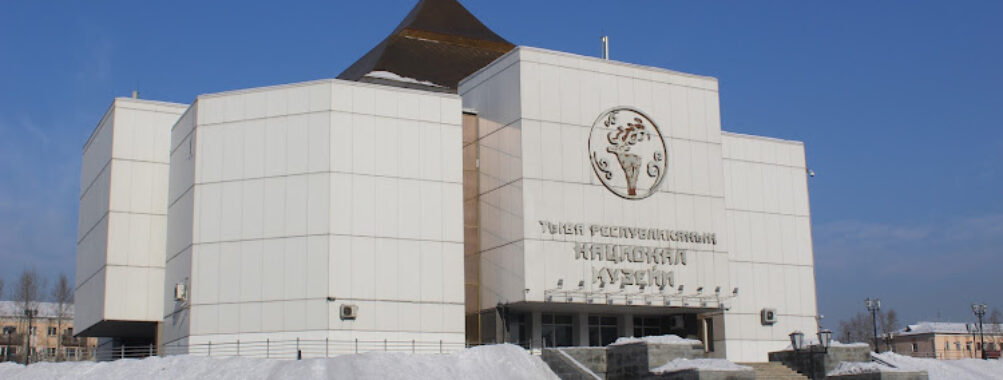
Tuva National Museum
Table of Contents
Description
The Tuva National Museum, officially known as the Aldan-Maadyr National Museum of the Republic of Tuva, is one of those places that quietly surprises you. At first glance, it looks like a modern building shaped somewhat like a stylized yurt, but once you step inside, you’re instantly pulled into centuries of history, culture, and artistry. Located in Kyzyl, the capital of Tuva, this museum is the cultural heartbeat of the region and a must-visit for anyone curious about the lesser-known corners of Siberia. It’s not a flashy museum in the way some European institutions are, but it has a depth that feels intimate and authentic.
What makes it stand out is its collection of artifacts from the Scythian burial mounds, particularly the treasures of Arzhan-2. These items—gold ornaments, intricate jewelry, and ancient weaponry—are jaw-dropping in both craftsmanship and preservation. And honestly, standing in front of them, you can’t help but imagine the lives of the nomadic horsemen who once roamed these steppes. Beyond the archaeology, the museum also showcases ethnographic pieces, traditional Tuvan costumes, shamanic drums, and even postage stamps and banknotes from the short-lived Tuvan People’s Republic. It’s a quirky mix, but it all ties back to the story of this land and its people.
Visitors often describe the museum as warm and approachable. It’s not overwhelming, and you don’t feel like you need a PhD in history to understand what you’re looking at. The displays are thoughtfully arranged, and there are enough English explanations to keep international travelers in the loop. Sure, some corners could feel a little dated in presentation, but that almost adds to its charm—it doesn’t try too hard to be something it’s not. And if you’re lucky, you might catch a live performance of throat singing or traditional dance, which makes the experience even richer. Families with kids find it engaging, and the accessibility features make it welcoming to a wider range of visitors. In short, it’s the kind of museum that leaves you thinking about it long after you’ve left.
Key Features
- Extensive collection of Scythian artifacts, including treasures from the Arzhan-2 burial mound
- Ethnographic exhibits featuring Tuvan costumes, shamanic instruments, and everyday objects
- Rare postage stamps, banknotes, and medals from the Tuvan People’s Republic (1921–1944)
- Live performances of Tuvan throat singing and traditional dance on special occasions
- Wheelchair-accessible entrance and parking
- Restroom facilities available on-site
- Family-friendly environment with engaging displays for children
Best Time to Visit
Timing your visit can make a big difference. Summer (June to August) is generally the most convenient season for travelers since the weather is warmer and the roads are more reliable. That’s also when cultural festivals often take place in Kyzyl, which means you might be able to combine your museum visit with outdoor celebrations, music, and performances. Winter, on the other hand, is brutally cold in Tuva, with temperatures plunging well below freezing. But if you’re the adventurous type, visiting in winter has its own magic—the museum feels quieter, more contemplative, and you’ll likely have more space to yourself. Personally, I’d say late spring or early autumn is the sweet spot: fewer crowds, mild weather, and still plenty of local activity around town.
How to Get There
Reaching the Tuva National Museum isn’t as straightforward as hopping on a high-speed train. Kyzyl doesn’t have a railway station, so most travelers arrive by plane via Abakan in Khakassia, followed by a long but scenic drive through the Sayan Mountains. The road trip itself is part of the adventure—you’ll pass rivers, forests, and mountain passes that are breathtaking in their own right. Once in Kyzyl, the museum is centrally located and easy to reach by foot or local taxi. If you’re staying in the city center, you can even make it a leisurely walk, soaking in the unique atmosphere of Tuva’s capital along the way.
Tips for Visiting
If you’re planning a trip, here are a few things that might make your visit smoother and more enjoyable:
- Take your time. Don’t rush through the exhibits. The gold artifacts from Arzhan-2 deserve a few extra minutes of quiet admiration.
- Bring cash. Card payments aren’t always reliable in smaller cities like Kyzyl, so having local currency on hand is wise.
- Ask about performances. If you’re interested in hearing Tuvan throat singing live, check with the staff about scheduled events. It’s unforgettable.
- Dress comfortably. The museum isn’t huge, but you’ll still spend a couple of hours walking around. Comfortable shoes make a difference.
- Travel light. There isn’t a large cloakroom, so avoid bringing bulky bags if you can.
- Go with a guide if possible. While the museum has English descriptions, a local guide can add fascinating context and stories you won’t get from the displays alone.
- Check opening hours. They can vary seasonally, and smaller museums sometimes close for holidays or maintenance.
Visiting the Tuva National Museum isn’t just about looking at artifacts behind glass—it’s about stepping into the cultural soul of a region that many travelers never even think to explore. It’s the kind of place that rewards curiosity, and if you’re willing to make the journey, you’ll walk away with a deeper appreciation for the history and resilience of Tuva and its people.
Location
Places to Stay Near Tuva National Museum
Find and Book a Tour
Explore More Travel Guides
No reviews found! Be the first to review!